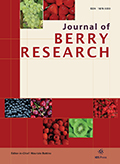Authors: Forbes-Hernandez, Tamara Y. | Gasparrini, Massimiliano | Afrin, Sadia | Mazzoni, Luca | Reboredo, Patricia | Giampieri, Francesca
Article Type:
Research Article
Abstract:
BACKGROUND: Strawberry, one of the most commonly berries consumed in the Mediterranean diet, is a rich source of antioxidants and phenolic compounds that exert beneficial effects on human health. However, to date, there is a lack of investigation about its cytotoxic effects. OBJECTIVE: The aim of the present study is to evaluate the cytotoxicity of a strawberry extract, particular rich in bioactive compounds, on different cellular models. METHODS: Human dermal fibroblast (HDF), RAW macrophages and Hepatocellular carcinoma (HepG2) cells were treated with different concentrations of strawberry extract (25, 50, 100, 250, 500, 1000, 2500, 5000,
…7500 and 10000 μg/mL) for 24, 48, 72 h. Cellular viability was performed through MTT assay. RESULTS: Strawberry extract showed no cytotoxic effects after 24 h of incubation in all cell lines, while after 48 h cytotoxic effects were observed at elevated concentrations (5000 μg/mL for HDF, 7500 μg/mL for RAW macrophages and 1000 μg/mL for HepG2). After 72 h, the concentration of 250 μg/mL resulted cytotoxic for HepG2, while for HDF and RAW cells the same toxic effect was obtained with a 10-fold higher concentration. CONCLUSIONS: This paper provides evidence that strawberry extract may exert cytotoxicity in vitro , depending on cell type, incubation time and concentrations applied. These aspects should be taken into account when experimental design is planned.
Show more
Keywords: Strawberry extract, polyphenols, cytotoxicity, cellular viability
DOI: 10.3233/JBR-160124
Citation: Journal of Berry Research,
vol. 6, no. 3, pp. 263-275, 2016




